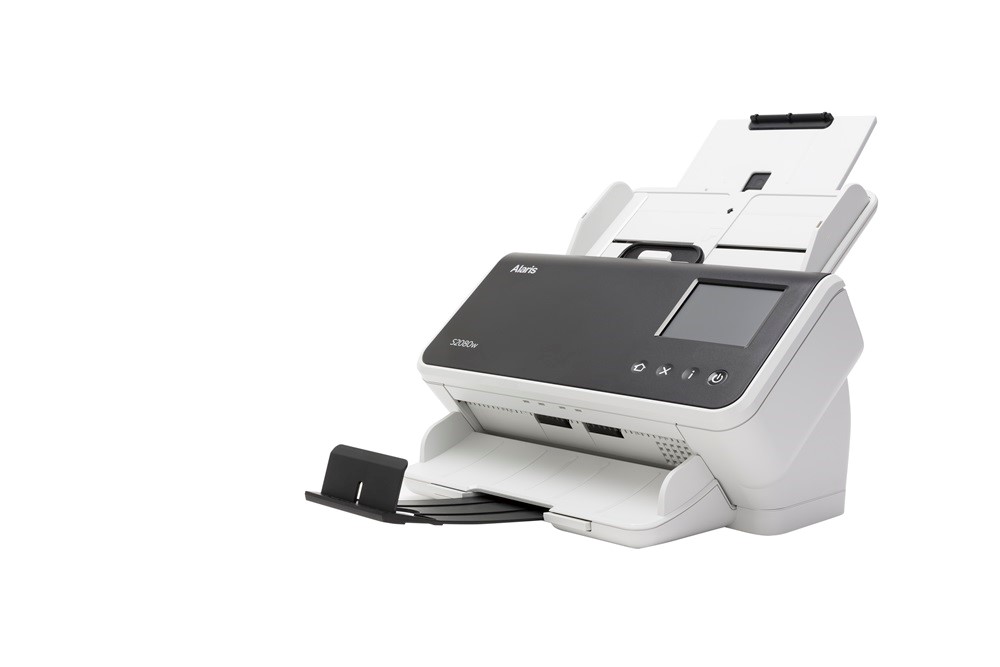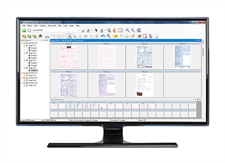
Paperwork is an integral part of doing business, but physical paper is not. In fact, reliance on paper documents results in millions of dollars of waste, which could be eliminated or at least radically reduced by going paperless. As your physical paperwork piles up, so will your issues:
- Slower time to complete routine tasks that rely on paper as an input
- Increased risk of a security breach through lost or stolen documents
- Potential for data entry errors from hand-keying information into systems
- Wasting money on office or offsite storage space just to keep paper copies
For these reasons and more, all kinds of businesses and public agencies are working towards paperless processes. Change can happen either top-down through corporate policies, or bottom-up from individuals managing processes that rely on paper, who see great opportunities to streamline their operations. Whichever model your organization is following or if you’re thinking ahead to future changes, read on for practical ways to get started with taking your business paperless.
The Worldwide Effort to Go Paperless
AIIM, the Association for Information and Image Management, is leading the charge in the paper-free effort. Their annual World Paper Free Day encourages companies to go paperless for a day to reduce the amount of paper generated by people in their everyday work and personal life.
“Slowly but surely, organizations are coming ‘round to the idea that digitizing much of the content and information flowing through their business can have both financial and operational benefits,” AIIM Chief Evangelist John Mancini said in a 2016 survey. “We are never going to eliminate paper completely, but when it becomes clear that going paper-free delivers return on investment and can improve overall productivity, businesses will be more willing to invest in the technologies that allow them to go paper-free.”
A Brief Background on the Paperless Office
It was June 30th, 1975 that Bloomberg Businessweek first proposed the digital, paperless, office. More than 40 years later, we’re clearly not there.
By 2012, the global demand for paper exceeded 400 million tons for the first time. Our every day is so permeated with paper that we don’t even think about it. For plenty of businesses though, there are ways to minimize the use of paper – or digitize business documents upon receipt. Digital documents are easier to access, store, and share. So, why aren’t we paperless yet?

Despite the optimism in the 70’s and the abundance of ways to cut down on paper use, most businesses and public agencies have a long way to go. Even those that have digital transformation efforts under way still have many opportunities to optimize their methods of moving everything paper-based to digital format as quickly as possible.
Research firm KeyPoint Intelligence explored the status of business going paperless in a December 2016 survey. When asked if they thought it was possible to move towards a paperless office, only 15% of the respondents though it was something they could achieve and another 23% thought it was impossible
In many ways, businesses who are in the process of going paperless are navigating through different 'ages' of digital – it's far from a single step from analog to digital information management due to the complexity of this transition.
Why Paper is Still So Prevalent
- Convenience: Working with paper documents is a given in most offices, as well as during business-to-business and business-to-consumer transactions. Team members can come up with lots of justifications, like “this is easier to read", “I need to file it”, “we need to archive it”, or “we have always done it this way”. Formats like JPEG and PDF are well on their way to outlasting many of the different businesses that use them. It is true that some older computer records can be difficult to access for now, but with standard migration efforts and long term preservation processes they can be handled as part of the document life cycle management.
- Compliance and Regulations: For many years, paper documents were required to complete some kinds of business transactions, especially those that involved a signature in order to be binding or those used to prove something in court. Many significant moment’s in a consumer’s life require paper, often for a signature. Big events like selling a business, applying for a loan, or signing off on a car purchase are examples. The specific requirements for digitized or digitally created documents to be accepted in court vary by country and document type, but government regulations often involve requirements that can only be met in a digital process that maintains a complete chain of custody.
- Perceived Affordability: At a glance, paper seems to be a more affordable option. Falling into accepting this belief is a mistake with a heavy price tag. The total cost of operating a primarily paper focused office comes with a list of externalities including printers, network connections, ink, toner, the paper itself, and the maintenance of all of these. As your business grows, so do these costs. At the enterprise level these costs are scaled up only to culminate in waste. When paper is a part of a business input, like an insurance claim form or paper survey submission, there are still significant labor costs needed to manually process information coming into the business.
The Benefits of Going Paperless
- Organization: No more piles of paperwork on the desk or shelves. No more clunky filing cabinets, either. This avoids misfiled or misplaced documents that take up valuable time that should be spent serving customers or working on other business priorities. Files and documents will be far easier to find, access, and share.
- Efficiency: Digital documents are much easier to manage, store, and retrieve than paper ones. Having documents available to access and share with customers regardless of the location, improves team productivity and brings a better customer experience. Extracting required data from a document (through automated recognition of machine print, handwriting or optical marks) is much quicker and less error prone than keying from paper.
- Scalability: Without rows of filing cabinets towering throughout the office, a paperless operation requires much less space. Personnel required for handling high volumes of business inputs during peak times or during a business expansion is hard to scale, while it is an easy task in a digital environment.
- Environmentally Friendly: Reduced printing means fewer trees will be cut down to produce paper. Paper is also highly energy consumptive both in production and transportation. The eco-friendly aspect of going paperless is a popular and relatively easy concept to garner support from your employees.
- Faster Communication: Unless you’re footing the bill for overnight delivery, such as when insurance claims need to be processed quickly and the agent needs to rush the documentation to a claims expert, paper documents will take at least a day to transfer from Point A to Point B. Even then there may be delays, misplacement, or complete loss. Once digitized, a document is available where it is needed, instantly. See how one construction supplier was able to instantly digitize Proof of Delivery, to receive customer payments faster.
- Document Backup and Recovery: It is costly and time consuming, or in many cases impossible to replace a paper document when it is damaged or misplaced. Your stakeholders may never be able to access important documents because someone misplaced a file, or when disaster strikes, like a fire, or floods damaging 200-year-old documents. With the paperless office, documents are stored electronically for simple and easy backups to a remote server or cloud repository that safely stores your essential information.
- Less Costly: Storing documents is costly, especially for businesses in prime locations. Printing costs money too; you pay for the paper itself, plus the printer, ink, postage, and printing equipment maintenance. Businesses can eliminate storage expenses by shifting to digital documents. With reduced, or eliminated necessity for storage of paper copies, your business may even be able to move into a smaller location with a lower rent to save even more by going paperless.
How These Advantages Help You
Beyond the general advantages of going paperless, there are specific advantages to moving paper out of workflows as quickly as possible for some of the most paper-intensive business applications.
Accounts Payable
Invoicing costs money; eliminating paper from the process reduces the overhead. Invoice processing is one of the most advanced applications with digital solutions available to handle end-to-end, in many cases without any human interaction. Digitizing paper inputs in an Accounts Payable process enables:
- Faster processing and easier control of payment timing to take advantage of discounts or avoid penalties
- Avoid costly and time consuming effort to match invoices and purchase orders
- Reduce time consuming manual efforts involved in tracking and chasing approvals
> Learn more about solving the Accounts payable processing Challenge
Mailroom Automation
A company mailroom can be a key bottleneck for a company, or the speedy onramp to many business processes. Handling peak workloads is possible with a digital mailroom to a degree that a manually operated mailroom can never achieve.
- Eliminate wait time for documents in the respective functions and departments
- Ensure that employees have real-time access to data and documents
- Increase customer satisfaction and loyalty through faster turnaround time
> Learn more about solving the Mailroom Automation Challenge
Forms Processing
Forms are often used in business applications, where customers expect an instant response. They present a key opportunity to offer customers a digital only alternative (i.e. eForms) or to digitize and process automatically.
- Streamline the data entry process to speed up the entire business process
- Reduce the error rate compared to extensive manual re-keying
- Free up knowledge workers to focus on higher value tasks
> Learn more about solving the Forms Processing Challenge
Onboarding
Customer onboarding requires far less work when it is digitized. Using the right platform, an organization is able to bring new customers onboard more quickly and smoothly. Digital onboarding is more personal. As oxymoronic as it may seem, it’s true. By cutting down the time it takes to onboard a new customer through reducing paperwork, there is more time available for the face-to-face interaction that makes a new customer feel more valued.
- Reduce time to process, increase customer satisfaction
- Spend less time on lower-value administrative tasks, increase employee satisfaction
- Significantly reduce errors
> Learn more about solving the Customer Onboarding Challenge
Records Management
Many regulated industries need to follow clearly defined processes and rules for handling and storing business documents. New regulations require process adjustments, additional validation and documentation which makes records management a moving target and particularly hard to accomplish in a paper based environment.
- Eliminate inefficiencies, time wasted and added costs of a paper-based system
- Protect sensitive personal data; digital information can be stored more securely with features such as password protection, data encryption, and two-factor authentication.
- Improve compliance with mandated regulations
> Learn more about solving the Records Management Challenge
Your Checklist for Turning Paperless into Reality
1. Assess paper-driven bottlenecks
- Inventory the processes in your business that are most critical, such as the ones that stop or harm the business if they are held up
- Review existing documentation or establish a quick step by step overview noting where paper is used in the process and the task involved
- Assess the number of paper business inputs required for the chosen processes in a typical month and the time involved in the manual handling of the paper document
- Identify process steps that provide a significant opportunity to digitize
2. Establish paperless processes where feasible
- Identify processes that rely on paper based inputs and can be easily shifted to digital, such as offering an eForm to replace a paper form
- Ensure that digital and conventional processes can be handled in parallel and are fully integrated to enable a smooth transition as volumes shift from paper to digital.
3. Scanning and Backfile conversion
- Any documents that arrive in paper form should be converted to electronic as quickly as possible upon receipt. You can’t force your clients, vendors, or licensing contacts to go paperless, and chances are that paper documents and files will likely be a part of your operations for some time. The key is to digitize those files as soon as they arrive in your company or agency.
- There may be value in converting existing archives to digital, but this requires high retrieval rates or the frequent integration into the processing of new business input. A business case assessment needs to confirm the business value.
4. Update Clients
- Once you have implemented the shift to fully electronic or digitalization, you should inform your clients about the changes and how it affects them. You may want to issue an email notice highlighting the advantages for them and also cover any concerns that may exist about security and privacy.
- Where applicable explain e-signatures to your clients as well.
- Ensure to offer and communicate incentives for your clients to change, like lower fees, added loyalty bonus etc. to ease the hurdle of convenience.
Finally, enjoy the benefits! The rewards in time and savings will begin adding up quickly and the return in customer satisfaction and loyalty are huge.
Your Key Tools for Going Paperless
Productivity resources abound for reducing your personal paper usage, but taking a bigger look at how paper is used across your organization will have the most impact. A key place to start is looking at where paper comes into your organization, and digitizing it on entry.
Your key tool for getting all of this done? The IN2 Ecosystem combines award-winning scanners and software with services and partnerships to help organizations easily collect information from their paper documents and go paperless. This unique approach is designed to deliver increased productivity, higher ROI and superior business value.

Advanced business scanners do much more than just capture an image, they become the onramp to a full digitization process. Scanners that are part of the IN2 Ecosystem, like the S2060w and S2080w turn raw data into information that drives real insight. When used in conjunction with capture software like Kodak Capture Pro Software, scans can be indexed, typed or handwritten text can be extracted and information can be extracted for use in business systems without any manual processing. Automating the information capture process takes out the complexity, and opens the doors to new opportunities for your business.

To learn more about the IN2 Ecosystem and the solutions to help you go paperless: www.alarisIN2.com. To get in touch with sales directly to learn about the ways we can help your organization optimize the information capture process, Contact Us today!
What to read next: From Chaos to Opportunity: Turn Your Data Into Gold


 Access Partner Portal
Access Partner Portal